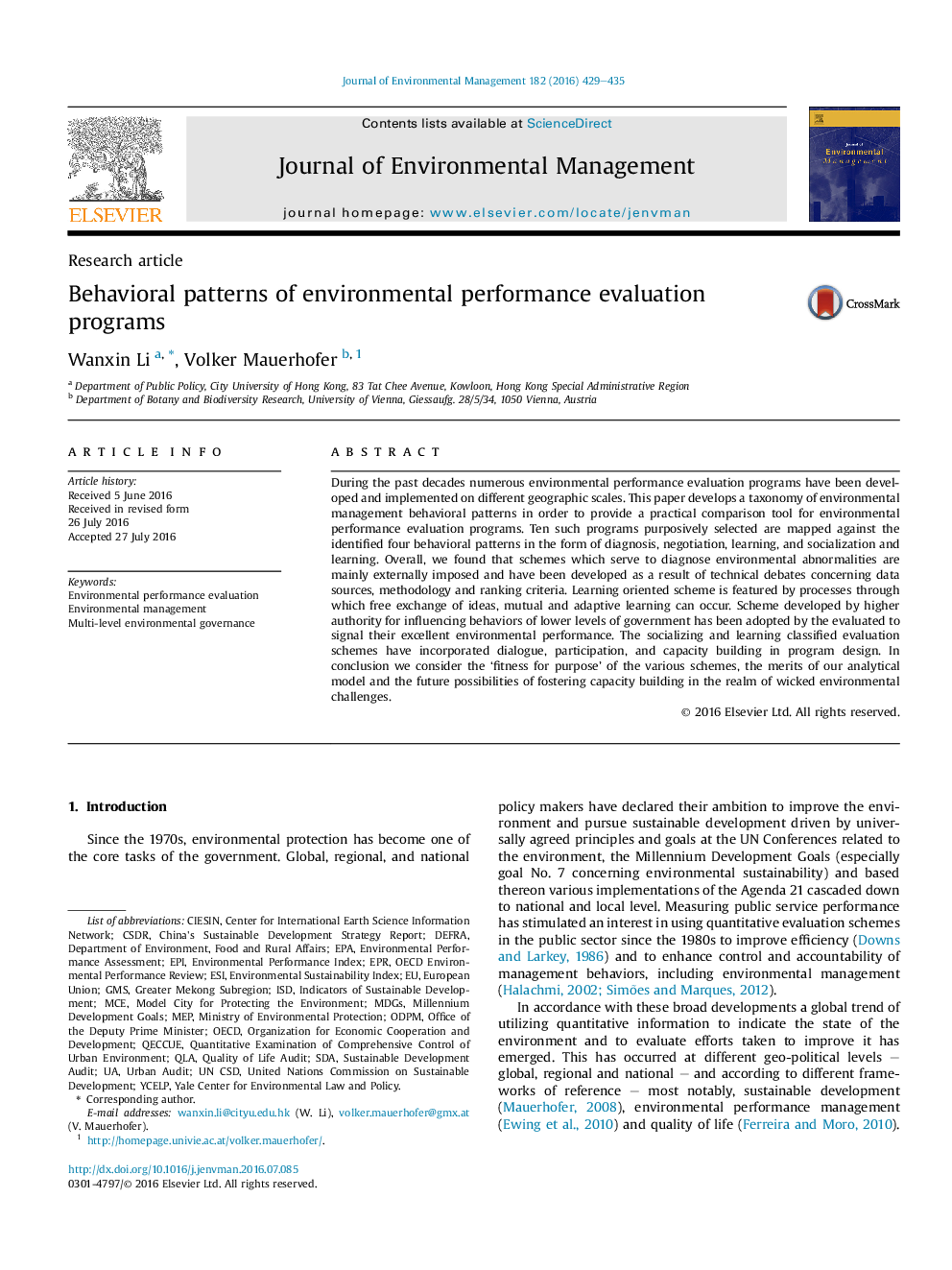| Article ID | Journal | Published Year | Pages | File Type |
|---|---|---|---|---|
| 7479190 | Journal of Environmental Management | 2016 | 7 Pages |
Abstract
During the past decades numerous environmental performance evaluation programs have been developed and implemented on different geographic scales. This paper develops a taxonomy of environmental management behavioral patterns in order to provide a practical comparison tool for environmental performance evaluation programs. Ten such programs purposively selected are mapped against the identified four behavioral patterns in the form of diagnosis, negotiation, learning, and socialization and learning. Overall, we found that schemes which serve to diagnose environmental abnormalities are mainly externally imposed and have been developed as a result of technical debates concerning data sources, methodology and ranking criteria. Learning oriented scheme is featured by processes through which free exchange of ideas, mutual and adaptive learning can occur. Scheme developed by higher authority for influencing behaviors of lower levels of government has been adopted by the evaluated to signal their excellent environmental performance. The socializing and learning classified evaluation schemes have incorporated dialogue, participation, and capacity building in program design. In conclusion we consider the 'fitness for purpose' of the various schemes, the merits of our analytical model and the future possibilities of fostering capacity building in the realm of wicked environmental challenges.
Keywords
ESIDEFRAGreater Mekong SubregionMCEISDEPIOECDMEPSDAEPAGMsEuropean UnionEnvironmental performance evaluationMDGsMillennium Development GoalsEPROrganization for Economic Cooperation and DevelopmentEnvironmental performance indexEnvironmental Sustainability IndexEnvironmental managementMinistry of Environmental Protection
Related Topics
Physical Sciences and Engineering
Energy
Renewable Energy, Sustainability and the Environment
Authors
Wanxin Li, Volker Mauerhofer,
